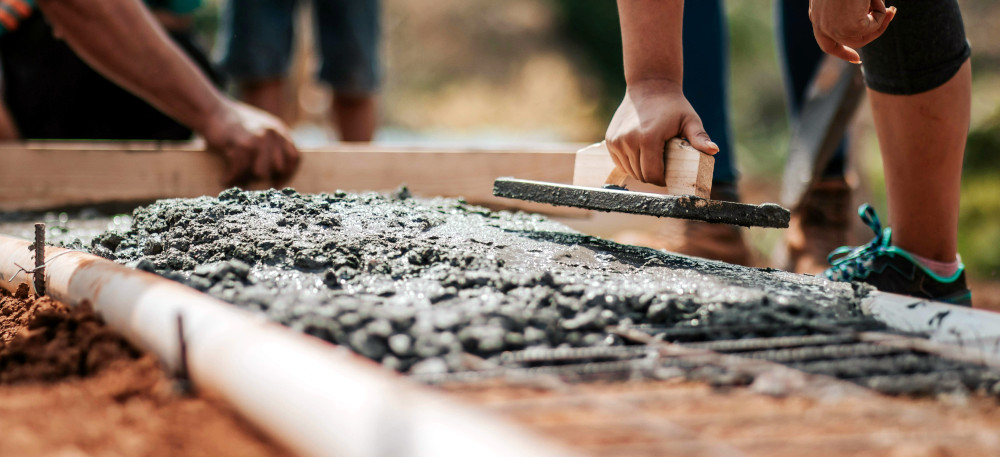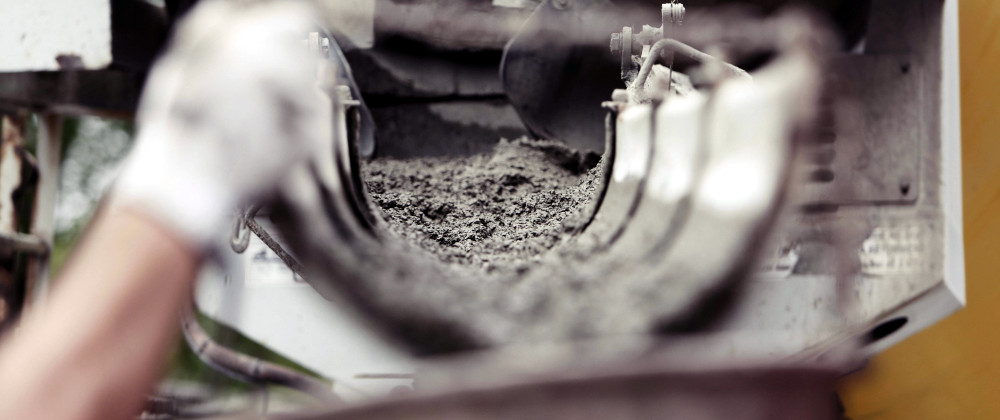UNIDO, GCCA partner to decarbonize concrete industry around the globe
 Image credit: Rodolfo Quirós
Image credit: Rodolfo Quirós
The UN’s Industrial Development Organisation
(UNIDO) has partnered with the Global Cement and
Concrete Association (GCCA) to work on
decarbonizing the cement and concrete industry, with a strong focus on the
Global South.
UNIDO supports its 172 Member States with economic and industrial development,
in line with the UN’s Sustainable Development
Goals
(SDGs). With its
long-standing experience in renewable-energy projects and the application of
clean-energy technologies in industry, UNIDO successfully collaborates with a
wide range of partners globally to support industries on their pathway to
net-zero emissions.
The GCCA is the cement and concrete industry’s main membership body —
representing 80 percent of cement production outside of China, as well as
several leading Chinese manufacturers. It is leading the industry’s
decarbonization work, through delivery of the GCCA 2050 Roadmap for Net-Zero
Concrete.
Cement and concrete are essential materials — vital for modern infrastructure
including homes, hospitals, bridges, tunnels, roads and so much more. But their
manufacture and wide use (concrete is the most used material on earth after
water) account for around 7 percent of the world’s CO2 emissions.
In early 2022, the GCCA launched its Net-Zero Roadmap Accelerator
initiative,
to help national cement and concrete industries decarbonize in line with the
GCCA’s 2050 Net Zero Global Industry Roadmap. It was start of the national and
regional phase of the GCCA’s 2050 Net Zero Global Roadmap, which emphasizes the
importance of local action and policymaking to help the cement and concrete
industry achieve its decarbonization commitments.
While the GCCA 2050 Roadmap was a global commitment, many of the levers need to
be implemented on a country or regional basis. Under the accelerators, the GCCA
is working with local industry and policymakers to identify the local levers and
challenges and recommending key actions. The first phase of the Accelerator
program includes focus across the Global South to help decarbonization progress
where building and infrastructure needs have been called the most pressing —
national roadmaps and government dialogues are taking place in Egypt, India,
Thailand and Colombia.
“Through our Net-Zero Roadmap and the Accelerator program, we are already
working with policymakers, governments and industry to overcome procurement and
resourcing challenges across the Global South,” said GCCA CEO Thomas
Guillot. “Having this
groundbreaking agreement with UNIDO is a natural progression, which we hope will
fast-track progress in a meaningful way.”
The partnership agreement includes pledges to:
-
provide recommendations for decision-makers to create the right market
environments for the development of low- and near-zero-emissions cement and
concrete
-
develop innovative technological solutions to help meet net-zero commitments
-
organize joint international industry and government events
-
jointly author and publish documents, recommendations and research tools
-
identify promising companies and innovative solutions and showcase these at
relevant events and in publications.
“Decarbonizing the cement and concrete sectors worldwide is essential to
reducing CO2 emissions and tackling climate change,” said UNIDO Director General
Gerd Müller. “The
GCCA and its members are leading the way on doing so for this important global
industry. Our UNIDO Member States face a number of technical, market-related and
policy hurdles that make decarbonization commitments even more challenging. That
is why I am very glad to sign this Memorandum of Understanding with the GCCA and
start a new phase of closer cooperation that will help our Member States
overcome those challenges."
Cambridge cement-recycling method could help solve one of the world’s biggest climate challenges
 Image credit: Life of Pix
Image credit: Life of Pix
Meanwhile, researchers from the University of Cambridge have developed a method to produce very low-emission concrete at scale — an innovation that could be transformative in the transition to net zero.
The method, which the researchers say is “an absolute miracle,” uses the
electrically powered arc furnaces used for steel recycling to simultaneously
recycle cement — the carbon-hungry component of concrete.
A scalable, cost-effective way of reducing concrete emissions while meeting
global demand is one of the world’s biggest decarbonization challenges. A
growing number of startups are developing much lower-impact
solutions
based on alternative materials, some that even absorb
carbon;
and a 2023 McKinsey
report
asserts that circular models for production and reuse of concrete and cement
could produce €110 billion in net value and avoid or mitigate two billion tons
of CO₂ emissions by 2050.
Exploring the circularity angle, the Cambridge researchers found that used
cement is an effective substitute for lime flux, which is used in steel
recycling to remove impurities and normally ends up as a waste product known as
slag. But by replacing lime with used cement, the end product is recycled
cement that can be used to make new concrete.
The Cambridge cement-recycling method — supported
in part by Innovate UK and the
Engineering and Physical Sciences Research
Council (part of UK Research and
Innovation) and reported
in the journal Nature — does not add any significant costs to concrete or
steel production and significantly reduces emissions from both concrete and
steel, due to the reduced need for lime flux.
Recent tests carried out by the Materials Processing
Institute, a partner in the project, showed that
recycled cement can be produced at scale in an electric arc furnace
(EAF) — the first time this has been achieved. Eventually, this method could
produce zero-emission cement, if the EAF was powered by renewable energy.
“We held a series of workshops with members of the construction industry on how
we could reduce emissions from the sector,” said Professor Julian
Allwood from Cambridge’s Department of
Engineering, who led the research. “Lots of great ideas came out of those
discussions, but one thing they couldn’t or wouldn’t consider was a world
without cement.”
Conventional concrete is made from sand, gravel, water and cement — which serves
as a binder. Although it’s a small proportion of concrete, cement is responsible
for almost 90 percent of concrete emissions. Cement is made through a process
called clinkering, where limestone and other raw materials are crushed and
heated to about 1,450°C in large kilns. The process converts the materials into
cement, but releases large amounts of CO₂ as limestone decarbonates into lime.
“I had a vague idea from previous work that if it were possible to crush old
concrete, taking out the sand and stones, heating the cement would remove the
water, and then it would form clinker again,” said first author Dr. Cyrille
Dunant, also from the
Department of Engineering. “A bath of liquid metal would help this chemical
reaction along, and an electric arc furnace — used to recycle steel — felt like
a strong possibility. We had to try.”
The clinkering process requires heat and the right combination of oxides, all of
which are in used cement, but need to be reactivated. The researchers tested a
range of slags, made from demolition waste and added lime, alumina and silica.
The slags were processed in the Materials Processing Institute’s EAF with molten
steel and rapidly cooled.
“We found the combination of cement clinker and iron oxide is an excellent
steelmaking slag because it foams and it flows well,” Dunant said. “And if you
get the balance right and cool the slag quickly enough, you end up with
reactivated cement without adding any cost to the steelmaking process.”
The cement made through this recycling process contains higher levels of iron
oxide than conventional cement, but the researchers say this has little effect
on performance.
The Cambridge Electric Cement process is
scaling rapidly, and the researchers say they could be producing one billion
tonnes per year by 2050 — which represents roughly a quarter of current annual
cement production. The researchers have filed a patent on the process to support
its commercialization.
“Producing zero-emission cement is an absolute miracle, but we’ve also got to
reduce the amount of cement and concrete we use,” Allwood stated. “Concrete is
cheap, strong and can be made almost anywhere; but we just use far too much of
it. We could dramatically reduce the amount of concrete we use without any
reduction in safety, but there needs to be political will to make that happen.
“As well as being a breakthrough for the construction industry, we hope that
Cambridge Electric Cement will also be a flag to help the government recognize
that the opportunities for innovation on our journey to zero emissions extend
far beyond the energy sector.”
Get the latest insights, trends, and innovations to help position yourself at the forefront of sustainable business leadership—delivered straight to your inbox.
Sustainable Brands Staff
Published Jun 24, 2024 2pm EDT / 11am PDT / 7pm BST / 8pm CEST